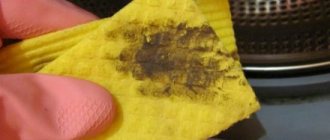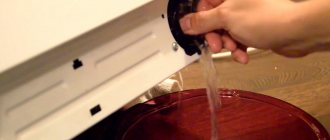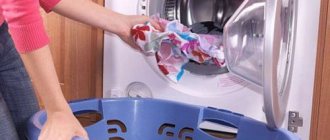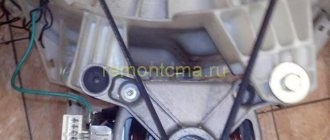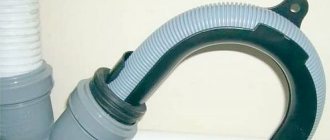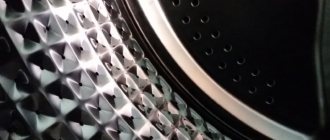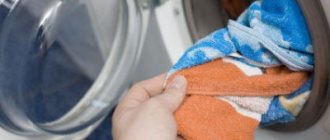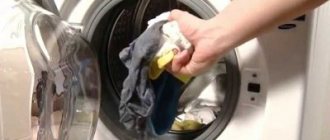What stains can you encounter?
Housewives who have been doing laundry for many years have probably encountered many types of multi-colored stains that an automatic machine can leave. But their origin is most often the fault of the owners of the equipment themselves, who did not provide proper care for the unit.
The list of the most common contaminants is as follows:
- colored spots on white and light-colored things;
- rusty, brown, red or orange;
- blue, purple, lilac;
- white stains on black clothes;
- yellow spots on white things;
- yellow on silk, wool, jackets;
- oil dark, gray;
- dark and black spots.
Features of the technology
The reason why a washing machine does not wash well is not always eliminated by changing detergents, softening the water, or even calling a technician. A large assortment of household appliances allows people to buy small-sized machines that not only take up little space, but also use water sparingly.
If your machine does not work as it should, does not wash the laundry and traces of powder remain on it, then the reason lies in the features of the unit itself. If it does not cope with the function assigned to it, then you probably chose the wrong mode or simply loaded the drum with clothes more than 90%. Due to overload, small washing aids often break down and, at best, are not able to rinse the fabric as needed.
Stains appeared after washing: is the washing machine to blame?
In most cases, the cleanliness of the laundry does not depend on the machine itself (the power or brand of the unit), but on the washing powder - its quality and dosage. Also, because of their rush, housewives often simply forget to sort clothes, overload the washing machine, or set the wrong program. Any of these factors can become critical. Below you will find the main causes of stains on things, as well as tips on how to avoid it.
Colored spots
The appearance of pink, brownish, orange and other stains on white or light-colored laundry is unlikely to make anyone happy. A possible reason in this case is usually their simultaneous washing with colored items. Often, brightly colored items fade, especially in hot water, and the owner may not even know about it if they have just been purchased. Trouble happens, for example, when loading new jeans, terry towels, woolen dresses, sweaters, etc. into the drum.
If stains of different shades appear on clothes after washing, this indicates that in the future, when storing, you need to sort the laundry by color, or at least try to match it to the same tone. Another option is to wash colored items together with black or very dark ones; in such cases, the marks simply will not be visible.
Advice : if you decide to wash light and colored items at the same time, then the water temperature should not be higher than 40°C. On modern automatic machines it is very easy to install this mode.
Traces of rust
When brown spots appear on clothes after washing, the main reason for this may be rust. Pollution of this type can also be red, yellow or orange - this mainly depends on their concentration and the type of tissue. Trouble occurs due to rusty water entering the drum. It is excluded with plastic water supply, for example, in private housing. But when connecting to a centralized pipeline, a problem arises after repairs to pipelines in some area - dirty brown liquid initially flows out of the tap.
In order not to stain things, you need to open several taps (in the kitchen, in the bathroom) and drain the water before washing. This can take from 30 seconds to 2 minutes, it all depends on the distance of the repaired pipe, its diameter and the degree of contamination. Water filtration is also a good means of protection, but the insert that must be installed in front of the water meter is not enough. Only two filters can give a 100% guarantee - fine and coarse filters. This issue is most pressing for people living in the private sector and those connected to a centralized highway.
Important : sometimes rusty spots or specks appear during drying. There is usually only one reason for this - the laundry gets dirty from a rusty dryer. It needs to either be replaced or painted.
Blue spectrum of pollution
Stains of various shades of blue may remain on linen or clothing: bluish, purple or lilac. There are several reasons for this, and one of them is a poorly dissolved corrector (powder with blue granules). This is possible if the substance is overdosed or the temperature specified in the instructions is exceeded. Another culprit is sometimes bleach, which masks the yellowness, but areas with the above shades may appear on top of it.
In this case, you don’t have to do anything special - just give up the powder with the corrector (blue) and don’t pour a lot of white into the drum, or even better, bleach the items before washing.
White stains
This applies to black and dark clothes, on which, after drying, white marks appear in the form of streaks. This happens due to an overdose of powder, which the machine simply cannot rinse out. The solution in this case is obvious - pour exactly as much detergent as indicated in the instructions from its manufacturer.
Also, the powder does not dissolve well, leaving streaks if the unit’s drum is overloaded. Don't do this and you can avoid problems.
Yellowness on white fabrics
Such stains are usually possible on white or light-colored clothing. They appear after things come into contact with fatty foods or cosmetics, and hot water further enhances the contrast of the stains.
If trouble occurs, the products must be washed. In order to remove fat from the fabric, it should first be soaked overnight in cold water. In this case, you need to add either special household chemicals intended for this purpose, or bio-powder with enzymes, or regular bleach. It is very important to adhere to the proportions here, so do not forget to read the instructions before using the products.
Whiteness and yellowness on delicate fabrics
White or yellow spots sometimes appear on wool, silk, viscose or microfiber after washing in an automatic machine. This also often occurs from an overdose of powders or liquid products, since delicate materials are not rinsed as well as ordinary ones. In addition (especially for jackets and down jackets), additional rinsing may be required, which should not be neglected.
To avoid white and yellow stains, you need to select a non-spin mode for delicate fabrics. But if it’s a jacket or down jacket, then start the rinse mode autonomously, and do two or three cycles.
Tip : Keep in mind that the powder or liquid product will not leave a residue if the packaging states that it is intended for delicate fabrics.
Other types
Sometimes gray and/or black spots appear not during the washing process, but after washing. As a rule, this occurs due to unwashed hands or a contaminated container, as well as a clothesline. The fix is as simple as washing your hands, rinsing your storage bowl, and wiping down your clothesline.
Soaking laundry
Soaking is not essential for obtaining a good result in the case of machine washing. But if you do this manually, then this stage is extremely important. To effectively complete the process, it is necessary to observe the following rules that any good housewife should follow:
- Items need to be sorted by degree of soiling, fabric type and color.
- Knitted and woolen fabrics must be washed separately.
- Undyed cotton and linen items should never be soaked together.
- Synthetic and natural materials must be washed separately.
- Soaking solutions should be prepared in advance.
- The time should not exceed 3 hours.
- The temperature of the solution should not be higher than 40 degrees.
Do you wash your shoes in the machine?
Oh yes! No
When the machine is to blame
Sometimes the washing machine stains clothes with black, gray, brown stains, in some cases with oil stains, which occurs for reasons related to the unit itself. There are at least three types of problems that arise due to irregular care of household appliances; they can be easily fixed on your own.
- Dirt and mildew have accumulated in the rubber fold of the cuff.
- Mold has collected in the liquid and powder tray.
- The pump filter is not cleaned.
- The drum seal is damaged.
Cuff contamination
The passage of wastewater through the cuffs cannot occur without leaving a trace - particles of contaminants will certainly remain on this part, which over time will contribute to the formation of fungal mold. Correcting the situation is not difficult - you just need to remove the stagnant dirt and mold with a damp cloth, while bending the elastic band of the cuff. It is important to follow the rule - this part must be thoroughly wiped dry after each wash. You should also be sure to ventilate the drum of the machine, leaving the door open.
Dirty tray
Over time, dirt begins to accumulate in the tray, and fungal mold appears on it. It is quite natural that when washing white or light-colored laundry, gray or even black spots will form, but they will not disappear with normal rinsing - the items will have to be washed again. To avoid problems, the tray should be washed regularly. The best option is to rinse the part after removing it and then dry it completely.
Cleaning the filter
In any case, dirt and large debris in the form of threads, fluff and other items left in clothing pockets will collect on the filter cartridge. In the case when a regular dump pump is installed on the machine, the result of filter contamination will only be an unpleasant smell of things, from which even air conditioners will not save you. But if the pump is recirculating, then stains are added to the unpleasant odor due to the secondary passage of water. There is only one way out - regularly unscrew and rinse the filter, and you also need to remove any debris stuck in the cartridge.
The drum seal has failed
When this part wears out, the lubricant is washed out during washing, and it ends up in the laundry tank. In such a situation, things become covered with dark oil stains that resemble blots or droplets. At the same time, the bearing may rust, which will also contribute to the contamination of clothing. This problem can only be solved by replacing components. To do this you need to call a specialist.
Important : Of course, there are other reasons for the appearance of spots and stains of different colors, but the methods for eliminating the problem are more complex. In such situations, it is better to contact the service center, and they will send a qualified specialist to help you.
As you can see, stains after washing are a completely solvable problem, which in most cases you can get rid of on your own. But it’s best not to deal with the consequences, but to prevent them, saving your time and money. Such measures include timely maintenance of the automatic machine and compliance with instructions when using powders and liquids.
Did you like the article? Save it to your Pinterest! Hover over the image and click “Save.”
SMA breakdowns - causes of spots
The causes of contamination associated with the condition of the washing machine are indicated by dark marks. If you do not regularly care for the device, problems can appear from different sides. Let's consider cases of laundry contamination caused by technical problems and poor care of SMA.
The cuff is dirty
It is recommended to wipe the cuff regularly. If this is not done, dirt will accumulate in the fold of the cuff, and then mold will form - a gray coating will form. The result is gray marks. To fix the problem, clean the cuff with a brush. Do this carefully, but carefully, so as not to damage the cuff.
Oil seal leaked
If the washer leaks from the bearing side, the drum seal has probably failed. It should be replaced with a new one. As soon as the oil seal leaks, the device is stopped immediately, otherwise water will get on the bearings and they will rust. The oil seal must be replaced as soon as possible; if you delay, the bearings will rust and begin to creak and make other unpleasant sounds. Rust causes laundry to become dirty.
Replacing the oil seal requires replacing the bearings - this procedure is best left to professionals. If the tank is collapsible and the owner of the machine wants to change the damaged parts himself, you need to buy bearings - 2 pieces, and an oil seal. Select the right bearing - take out the old ones and look at their number, and then buy exactly the same or suitable analogues.
Due to worn seals, oil or fuel oil appears on washed clothes, since when these parts wear out, they release oil into the tank, which then ends up on the fabric.
Seal replacement procedure:
- Removing the top panel.
- Removing the bottom cover.
- Removing the front panel.
- Removing the rubber cuff.
- Disassembling the tank of the machine into two parts.
- Replacement of bearings and seals.
The tank is very fragile, so the bearings should be knocked out very carefully. New bearings are driven into places that have been previously polished to a shine. The new oil seal is lubricated with waterproof oil and inserted into place. Read more with photos and videos here.
The pump, tank or pipe is dirty
A clogged drain system is another reason things get dirty. The pump, tank and pipes can become clogged in two ways:
- Mechanical. By chance, foreign objects appear in the drain system, blocking its operation. These can be any small objects - coins, buttons, etc.
- Natural. These blockages form gradually - due to the ingress of wool, hair, lint, etc.
To clean the system, you need to:
- Clear the blockage in the garbage filter drain.
- If there is no debris in the drain, the SMA is disconnected from the power supply, water supply and drainage system - for ease of operation. Tilt the device to the left to get to the pump and pipes, which should also be checked for blockages.
- If no blockage is found there, remove the pump and then the motor to open the way to the main pipe leading to the waste filter.
- If there is no blockage in the pipe, you will have to contact a specialist to find out the origins of the problem.
How to clear the blockage yourself:
- Remove dirt or objects stuck in the system directly with your hand or something thin, such as a screwdriver. There can be many clogs, so removing one of them does not guarantee a solution to the problem.
- Along with mechanical cleaning, it is useful to chemically clean the system using a special cleaning agent. A drug, for example Dr. Beckmann, pour into the cuvette and turn on the machine in 90 degree mode. The product can be poured directly into the drum - if there is dirt on its walls.
Mold in the internal parts of the SMA
Lack of SMA care or improper care leads to the formation of mold. It can appear in various parts of the washing machine - in the detergent tray, in the cuff, in the drum, tank, pipes. Mold also causes stains.
Why does mold appear:
- closing the wet compartment for detergent;
- closing the drum door immediately after removing items.
Ventilating and drying the machine helps prevent the formation of mold - so, according to the user instructions, do not close the hatch door after using the machine for some time, but it is better to keep it ajar all the time.
You can guess the presence of mold by the smell - just sniff the “inside” of the drum. To find out where there is mold, proceed as follows:
- Unfold the cuff and inspect all the cracks.
- Inspect the inner walls of the drum.
- Look into the detergent drawer.
- Remove the cuvette and inspect it.
If you find a dark fluffy coating in at least one of the examined places, it will become clear where the gray dirt on the washed items comes from.
If there is mold in the washer, things will smell unpleasant even after using the best conditioner.
Procedure for removing mold:
- soda is poured into the cuvette - about 300 g;
- select the maximum water temperature;
- start the device at idle speed, turning on double rinsing.
The process is repeated until the mold is completely eliminated.
Rust
If a corrosive object gets stuck inside the washer, it can cause rust stains. For example, a nail, paper clip, or other small metal item that has fallen out of your pockets can rust. Once they get behind the cuff, they begin to rust there, and the owner of the SMA does not even suspect the presence of a small “saboteur” until he reveals himself. The user’s task is to quickly detect and remove a foreign object from a secluded place.
To prevent rust from forming inside the washer, water softeners are used.
To remove traces of rust, pour salt on top and then lemon juice. After a day, wash the soiled item. If this does not help, you will have to purchase a special stain remover.
If you choose and dose powders correctly and follow the operating rules of the washing machine, then the washing result will be what we expect. Any violation or lack of care for SMA can result in damage to things with further waste of time and effort to correct the consequences of negligence.
